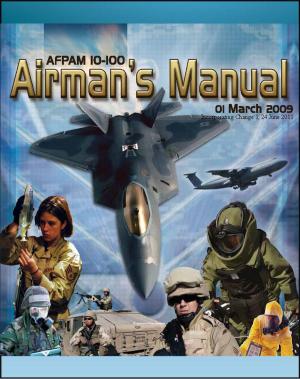Case Studies in the Use of Land-Based Aerial Forces in Maritime Operations, 1939-1990: Battle of the Atlantic, Arctic Convoys, Dunkirk, Pacific, Repulse Sinking, Falklands War, Cold War, Tanker War
Nonfiction, History, Military, Aviation, World War II| Author: | Progressive Management | ISBN: | 9781310007927 |
| Publisher: | Progressive Management | Publication: | July 12, 2015 |
| Imprint: | Smashwords Edition | Language: | English |
| Author: | Progressive Management |
| ISBN: | 9781310007927 |
| Publisher: | Progressive Management |
| Publication: | July 12, 2015 |
| Imprint: | Smashwords Edition |
| Language: | English |
Professionally converted for accurate flowing-text e-book format reproduction, this unique USAF publication examines in detail the development and employment of land-based air power in maritime operations, through a series of case studies spanning a period of more than fifty years. Although the emphasis is on World War II, modern examples of land-based air power, through the end of the Cold War, are also examined. The conclusions are that historically land-based air forces seldom received priority in operations against maritime targets, nor—despite their demonstrated achievements in the crucible of battle—have the land-based forces been "optimally organized, equipped, and trained for air-sea warfare when hostilities began." Nonetheless, over the period covered in this volume, land-based air power has clearly transformed the nature of naval warfare. The influence of that change in the years ahead remains to be seen.
Chapter I - Introduction * Notes * Chapter II - The Battle of the Atlantic * Organizing Land-based Aerial Forces for the Battle * The Trans-Atlantic Sea Lane Campaign * Combating Surface Raiders * Arctic Convoys * Notes * Chapter III - Coastal and Mediterranean Operations * Coastal Operations * The Battle of Dunkirk, May-June 1940 * Coastal Campaign Part II * The Mediterranean Maritime Air Campaign * Notes * Chapter IV - The North Pacific * Preparing for War * Aleutian Invasion and Recapture * Attacking Northern Japan * Notes * Chapter V - Indian Ocean and Southwest Pacific Operations * The Sinking of the Prince of Wales and the Repulse * The Southwest Pacific * Notes * Chapter VI - The Falklands War * Great Britain Orders a Fleet * First Contest of Arms * Contesting the Invasion Fleet * Terminal Events * Notes * Chapter VII - The Tanker War * Notes * Chapter VIII - Cold War Applications * Soviet Land-Based Maritime Aerial Forces * American Land-Based Maritime Aerial Forces * Notes * Chapter IX - Reflections * Bibliographic Essay
Historians have written much about naval aviation in general and carrier aviation in particular. But they have said relatively little about the role of land-based aerial forces employed in maritime operations. Proponents of various air doctrines have acknowledged, discussed, and even trumpeted that usage since Louis Bleriot flew across the English Channel in 1909. Long overdue for synthesis and historical analysis, it is the subject of this book.
Many factors affected maritime applications of land-based aerial forces between the first air war that began in 1914 and the world's last major conflict, the Gulf War, that ended in 1991. They included inter-service rivalry, evolving doctrine, aircrew skills, available aircraft and related technology, operational requirements, and the nature of targets. The beliefs and concerns of strong personalities also played an important role. The case studies in this book address each of these influences as they affected the employment of land-based aircraft in maritime operations. Understanding them is important. Certainly, between 1918 and the present, as events unfolded the threat or application of land-based air power has to some degree influenced nearly every naval plan and action.
Land-based aerial forces for the purpose of these case studies are defined as heavier-than-air and lighter-than-air craft operating from land bases. They include amphibian planes, float planes, and flying boats (each sometimes called sea planes) operating from shore bases. They do not include aircraft on wheels or skids launched from vessels, or sea planes operating with tender support. In many of the case studies presented, however, land and sea-based aerial forces cooperated and, in certain cases, it is not always possible to entirely segregate one from the other.
Professionally converted for accurate flowing-text e-book format reproduction, this unique USAF publication examines in detail the development and employment of land-based air power in maritime operations, through a series of case studies spanning a period of more than fifty years. Although the emphasis is on World War II, modern examples of land-based air power, through the end of the Cold War, are also examined. The conclusions are that historically land-based air forces seldom received priority in operations against maritime targets, nor—despite their demonstrated achievements in the crucible of battle—have the land-based forces been "optimally organized, equipped, and trained for air-sea warfare when hostilities began." Nonetheless, over the period covered in this volume, land-based air power has clearly transformed the nature of naval warfare. The influence of that change in the years ahead remains to be seen.
Chapter I - Introduction * Notes * Chapter II - The Battle of the Atlantic * Organizing Land-based Aerial Forces for the Battle * The Trans-Atlantic Sea Lane Campaign * Combating Surface Raiders * Arctic Convoys * Notes * Chapter III - Coastal and Mediterranean Operations * Coastal Operations * The Battle of Dunkirk, May-June 1940 * Coastal Campaign Part II * The Mediterranean Maritime Air Campaign * Notes * Chapter IV - The North Pacific * Preparing for War * Aleutian Invasion and Recapture * Attacking Northern Japan * Notes * Chapter V - Indian Ocean and Southwest Pacific Operations * The Sinking of the Prince of Wales and the Repulse * The Southwest Pacific * Notes * Chapter VI - The Falklands War * Great Britain Orders a Fleet * First Contest of Arms * Contesting the Invasion Fleet * Terminal Events * Notes * Chapter VII - The Tanker War * Notes * Chapter VIII - Cold War Applications * Soviet Land-Based Maritime Aerial Forces * American Land-Based Maritime Aerial Forces * Notes * Chapter IX - Reflections * Bibliographic Essay
Historians have written much about naval aviation in general and carrier aviation in particular. But they have said relatively little about the role of land-based aerial forces employed in maritime operations. Proponents of various air doctrines have acknowledged, discussed, and even trumpeted that usage since Louis Bleriot flew across the English Channel in 1909. Long overdue for synthesis and historical analysis, it is the subject of this book.
Many factors affected maritime applications of land-based aerial forces between the first air war that began in 1914 and the world's last major conflict, the Gulf War, that ended in 1991. They included inter-service rivalry, evolving doctrine, aircrew skills, available aircraft and related technology, operational requirements, and the nature of targets. The beliefs and concerns of strong personalities also played an important role. The case studies in this book address each of these influences as they affected the employment of land-based aircraft in maritime operations. Understanding them is important. Certainly, between 1918 and the present, as events unfolded the threat or application of land-based air power has to some degree influenced nearly every naval plan and action.
Land-based aerial forces for the purpose of these case studies are defined as heavier-than-air and lighter-than-air craft operating from land bases. They include amphibian planes, float planes, and flying boats (each sometimes called sea planes) operating from shore bases. They do not include aircraft on wheels or skids launched from vessels, or sea planes operating with tender support. In many of the case studies presented, however, land and sea-based aerial forces cooperated and, in certain cases, it is not always possible to entirely segregate one from the other.















